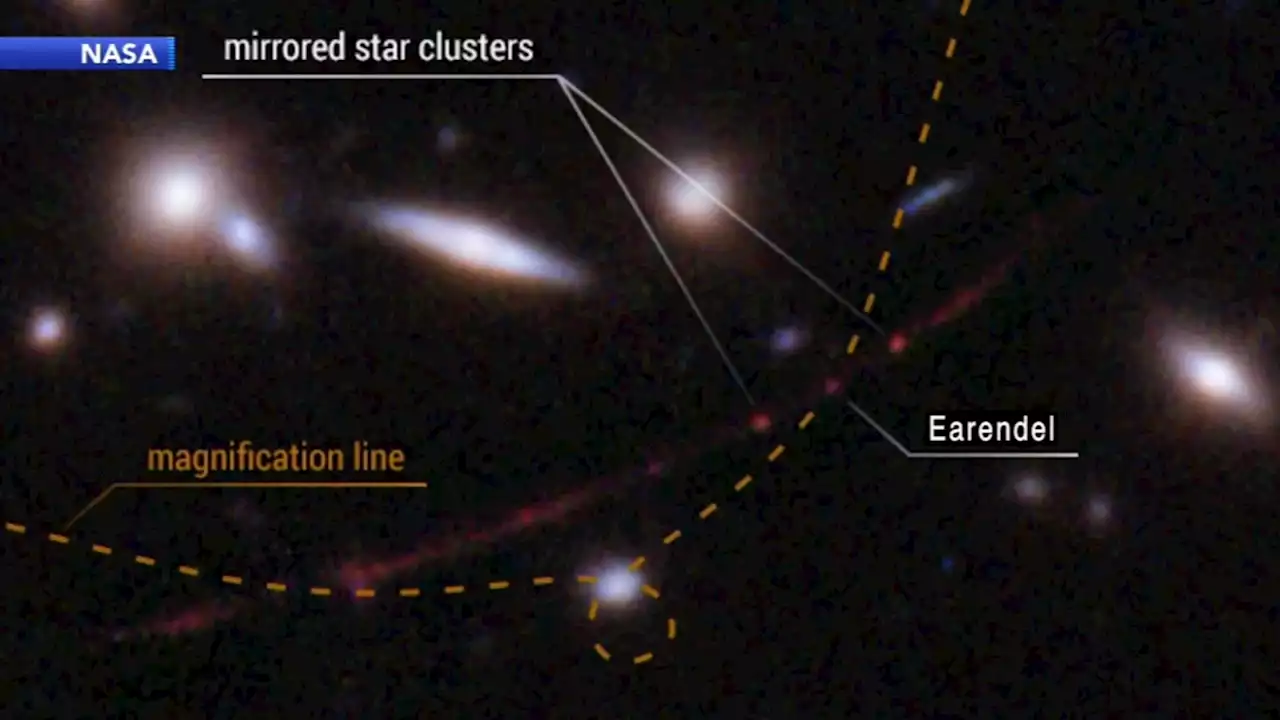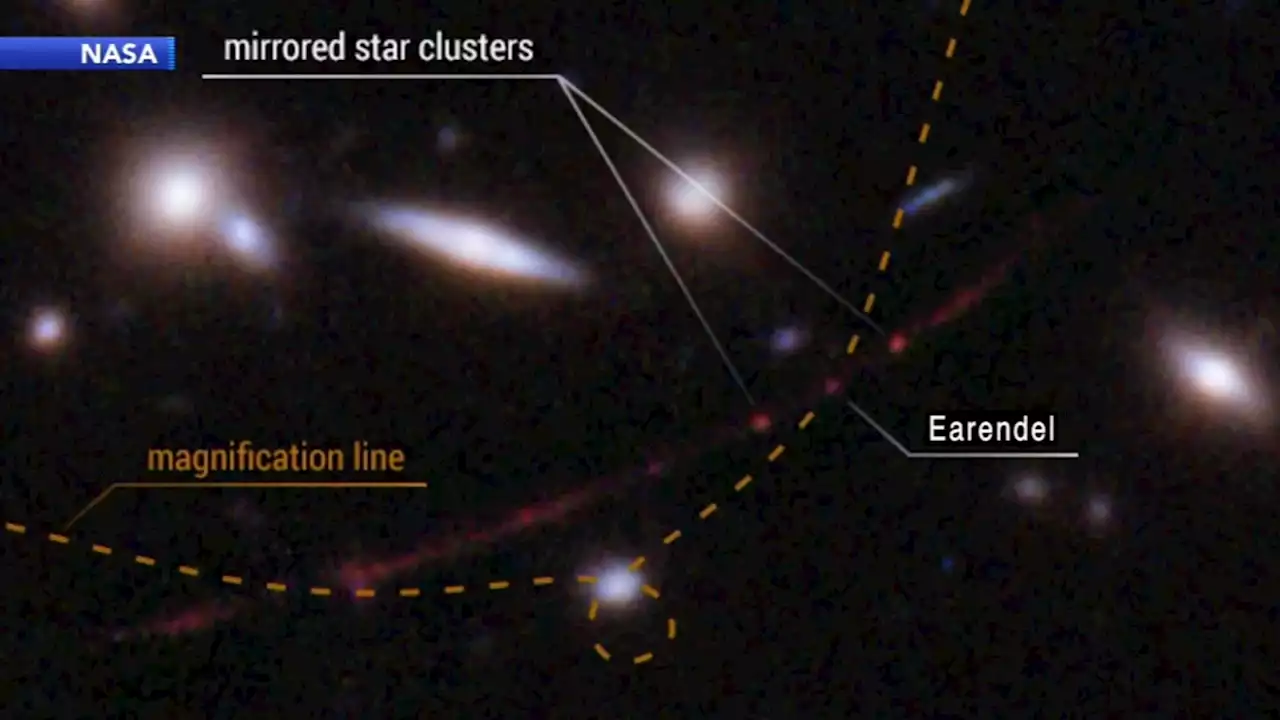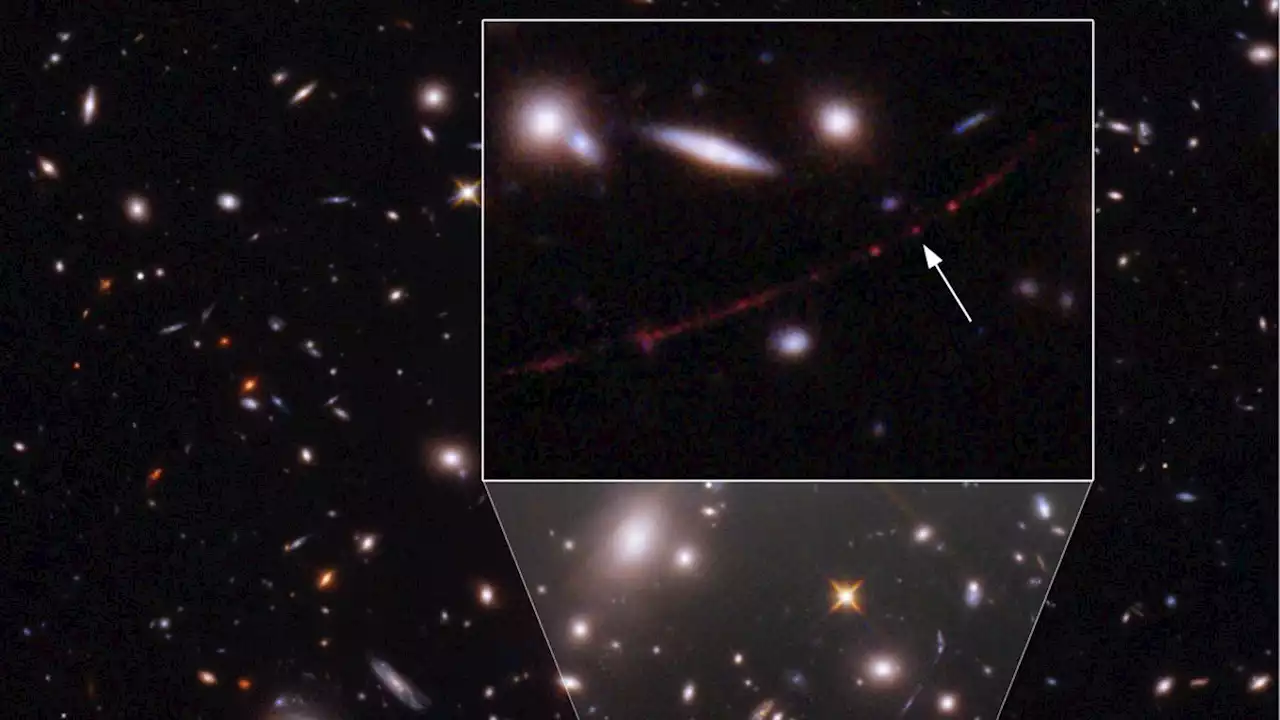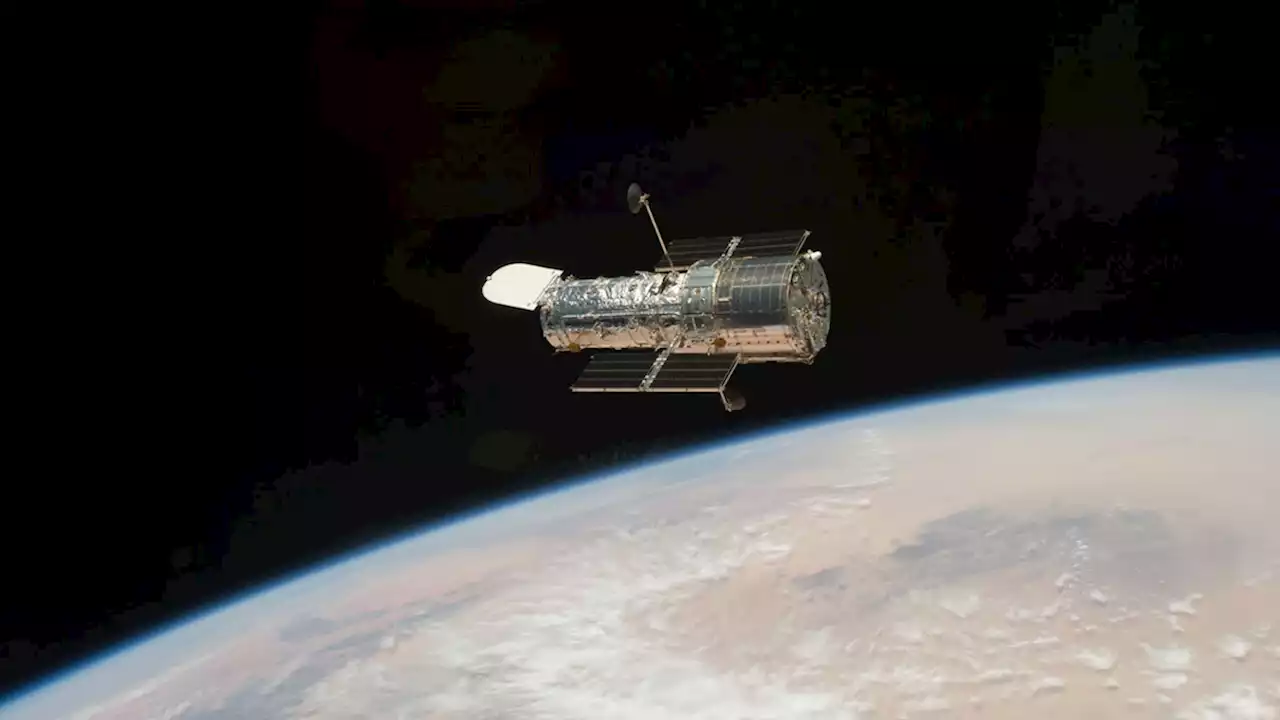A new record! Hubble Space Telescope spots the farthest star ever seen - by b0yle
for a single star, which registered a redshift of 1.5 and is thought to have existed when the universe was 4 billion years old.
A close look at the arc turned up several bright spots, but the characteristics of the light coming from Earendel pointed to a high redshift, which translates into extreme distance. The higher the redshift, the faster the source of the light is receding from us in an ever-more-quickly expanding universe.
One fuzzy spot in the Sunrise Arc stuck out. The nickname that Welch and his colleagues gave to that spot, Earendel, comes from the Old English word for “morning star.”
Ireland Latest News, Ireland Headlines
Similar News:You can also read news stories similar to this one that we have collected from other news sources.
 Hubble Space Telescope sees most distant star ever, 28 billion light-years awayThe Hubble Space Telescope has glimpsed the most distant single star it's ever observed, glimmering 28 billion light-years away.
Hubble Space Telescope sees most distant star ever, 28 billion light-years awayThe Hubble Space Telescope has glimpsed the most distant single star it's ever observed, glimmering 28 billion light-years away.
Read more »
 Hubble Space Telescope sees most distant star ever, 28 billion light-years awayThe Hubble Space Telescope has glimpsed the most distant single star it's ever observed, glimmering 28 billion light-years away.
Hubble Space Telescope sees most distant star ever, 28 billion light-years awayThe Hubble Space Telescope has glimpsed the most distant single star it's ever observed, glimmering 28 billion light-years away.
Read more »
Hubble Space Telescope sees most distant star ever, 28 billion light-years awayThe Hubble Space Telescope has glimpsed the most distant single star it's ever observed, glimmering 28 billion light-years away.
Read more »
 Hubble Space Telescope spots most distant single star ever seenMassive news! NASAHubble spots the most distant star yet seen, called Earendel 🌟
Hubble Space Telescope spots most distant single star ever seenMassive news! NASAHubble spots the most distant star yet seen, called Earendel 🌟
Read more »
 Most distant star ever seen found in Hubble Space Telescope imageSpotted in a galaxy that existed just 900 million years after the big bang, the primordial star Earendel could offer a rare window into the early universe if confirmed by follow-up studies.
Most distant star ever seen found in Hubble Space Telescope imageSpotted in a galaxy that existed just 900 million years after the big bang, the primordial star Earendel could offer a rare window into the early universe if confirmed by follow-up studies.
Read more »
Hubble discovers most distant star ever seen, setting stage for James Webb Space TelescopeThe Hubble Space Telescope has detected light from a star that formed 1 billion years after the Big Bang, making it the most distant star ever observed and setting the stage for what the James Webb Space Telescope might soon discover.
Read more »
